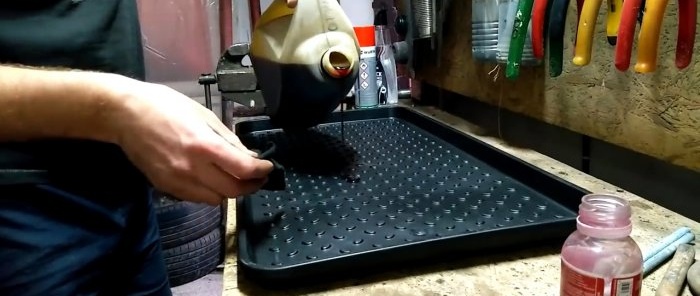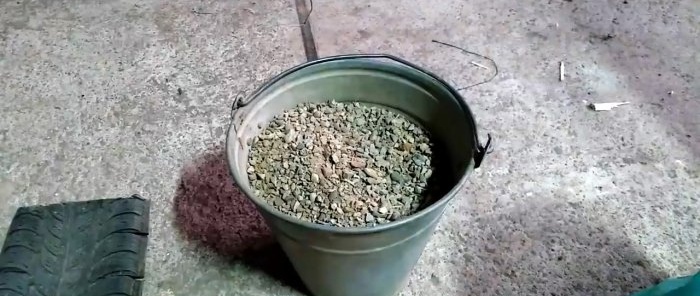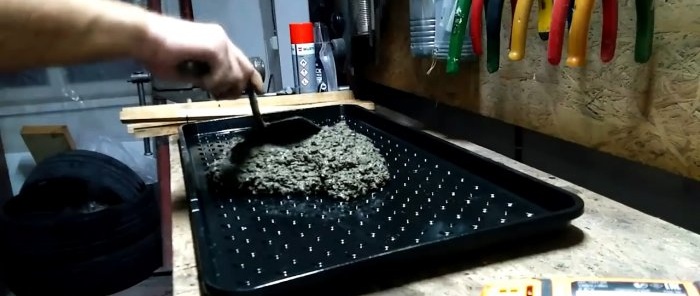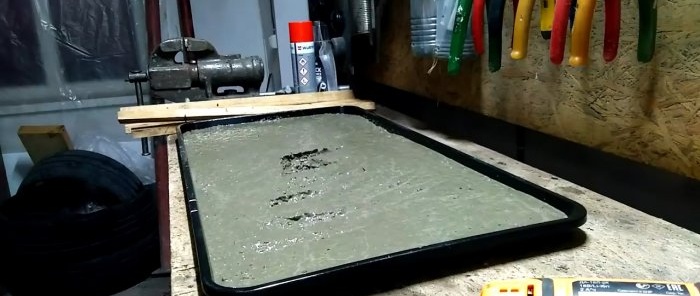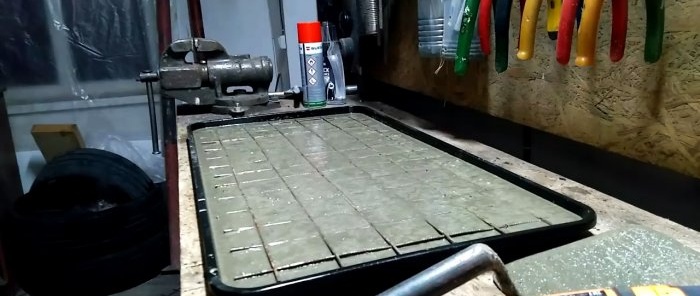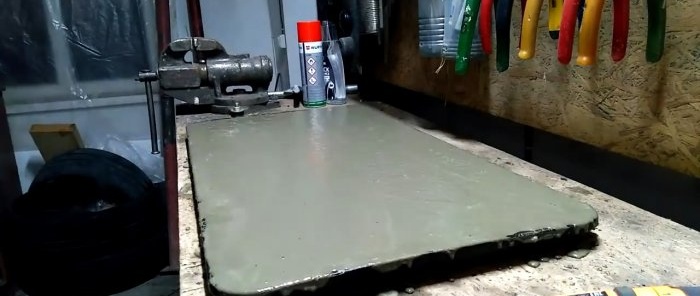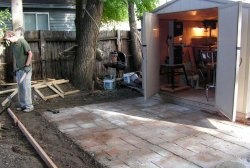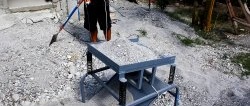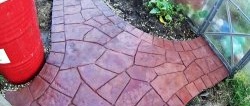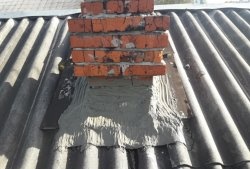To arrange paths in the garden, you can make concrete slabs with your own hands. It will cost very little and will not take much time. It can be laid closely, or you can make walking paths.
What you will need:
- Mold for casting tiles (you can use a plastic shoe tray);
- working off;
- dropout;
- cement;
- water;
- masonry mesh.
Tile making process
You need to select a plastic form into which the concrete will be poured. Its height must be at least 20 mm (in this example a shoe tray is used).
From the inside it is lubricated by working out.
Concrete is half poured into the mold. To prepare it, mix 2 parts of screenings and 1 part of cement. A minimum of water should be poured in to achieve greater strength of the solution.
A masonry welded mesh is laid on top of the first layer of mortar.
Then the form is filled with concrete to the end. You need to shake it well to remove air bubbles.
On the second day, the tile is removed and the next one is poured. So you can slowly make any number of them, spending 10 minutes a day.
After 28 days, the tiles gain full strength and can be laid. Since it is reinforced, even a small thickness will be enough to support the weight of a person. The tiles are laid on a flat, compacted base, preferably on a sand cushion.
Watch the video
Making paving slabs with your own hands - https://enn.washerhouse.com/3918-izgotovlenie-trotuarnoy-plitki.html


